
Smart City
Navigation app for people with visual impairments that supports independent movement through buildings and public spaces, such as metro stations or government offices.
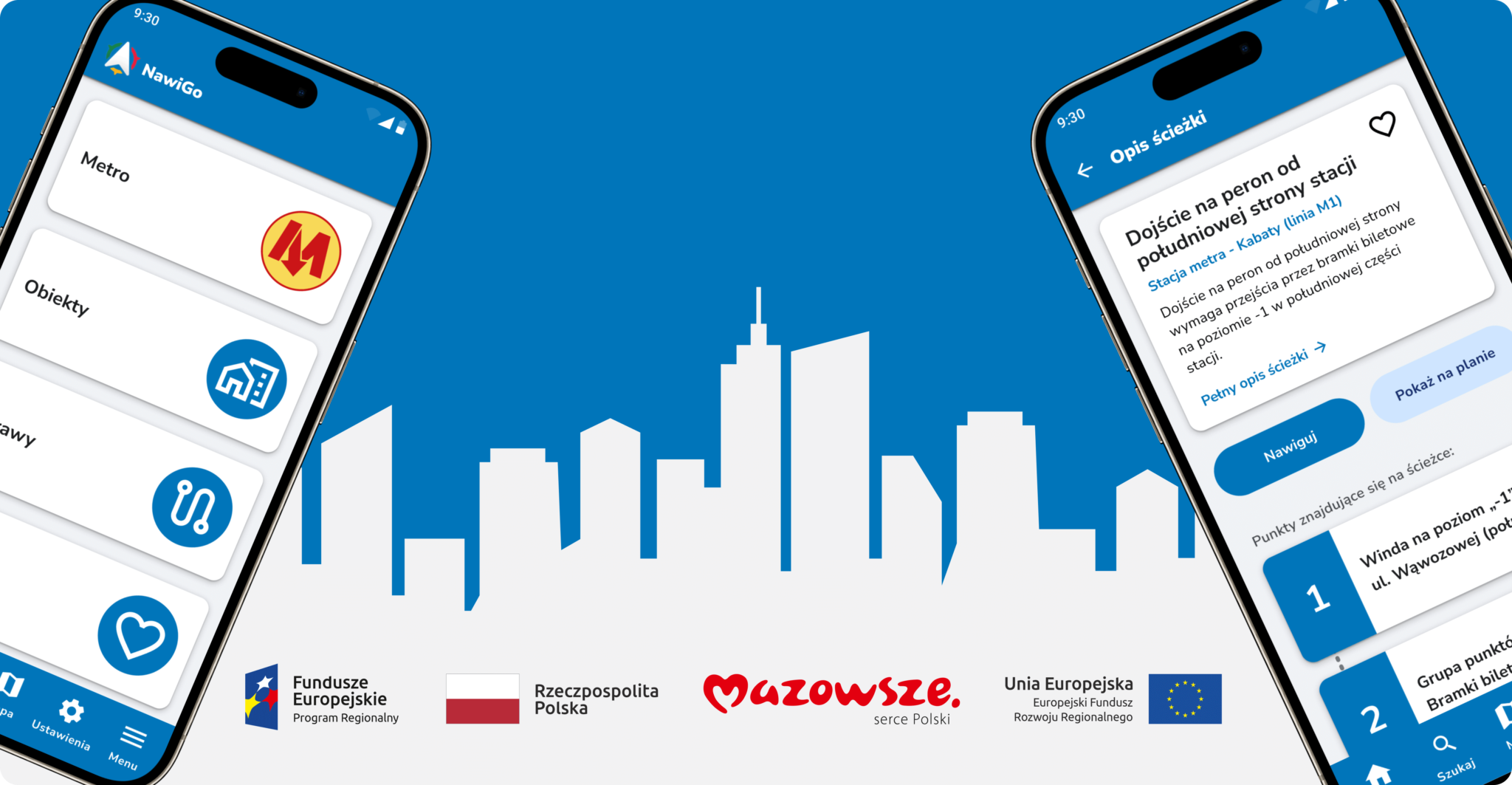
Project summary
Industry:
Smart City
Budget:
250 000 $ – 499 000 $
Project duration:
24 months
Services provided:
- Design workshops
- User needs analysis
- UX/UI design
- Mobile app development
- Accessibility testing
- Deployment and maintenance
Technologies:
- Flutter,
- Kotlin Multiplatform,
- Bluetooth,
- Beacon,
- Open Street Map
- Text-to-Speech
- Firebase push notifications
Purpose of the app
NawiGo is an app designed to help people with visual impairments navigate public spaces independently. It provides precise guidance and indoor navigation, allowing users to reach specific destinations such as government offices, metro stations, or other public institutions.

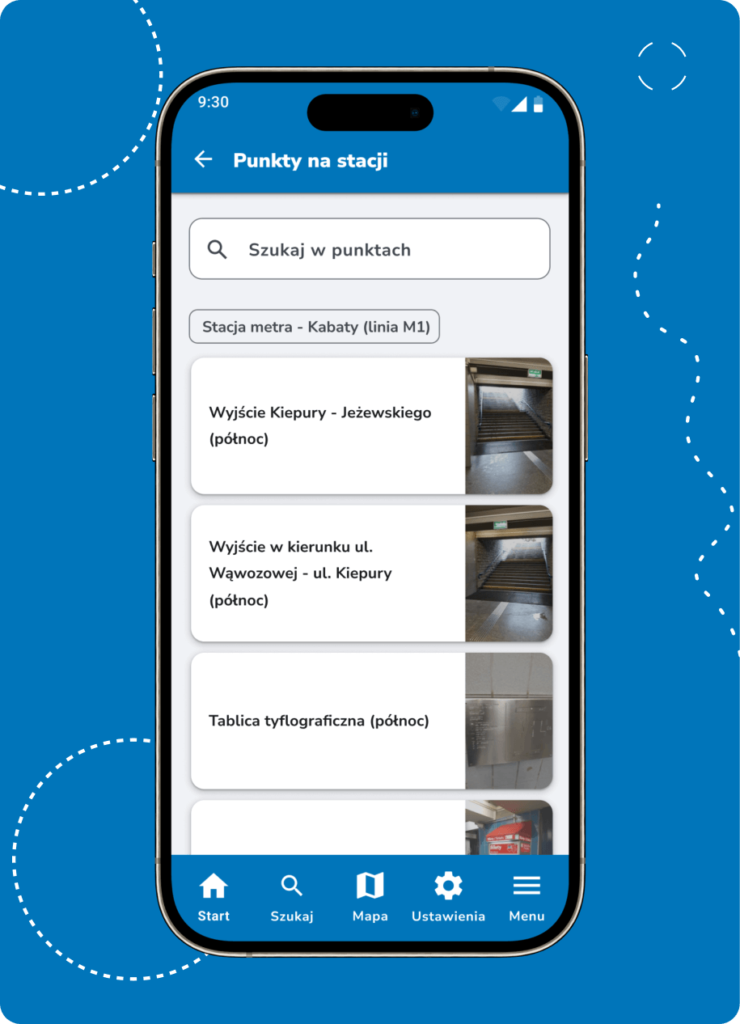
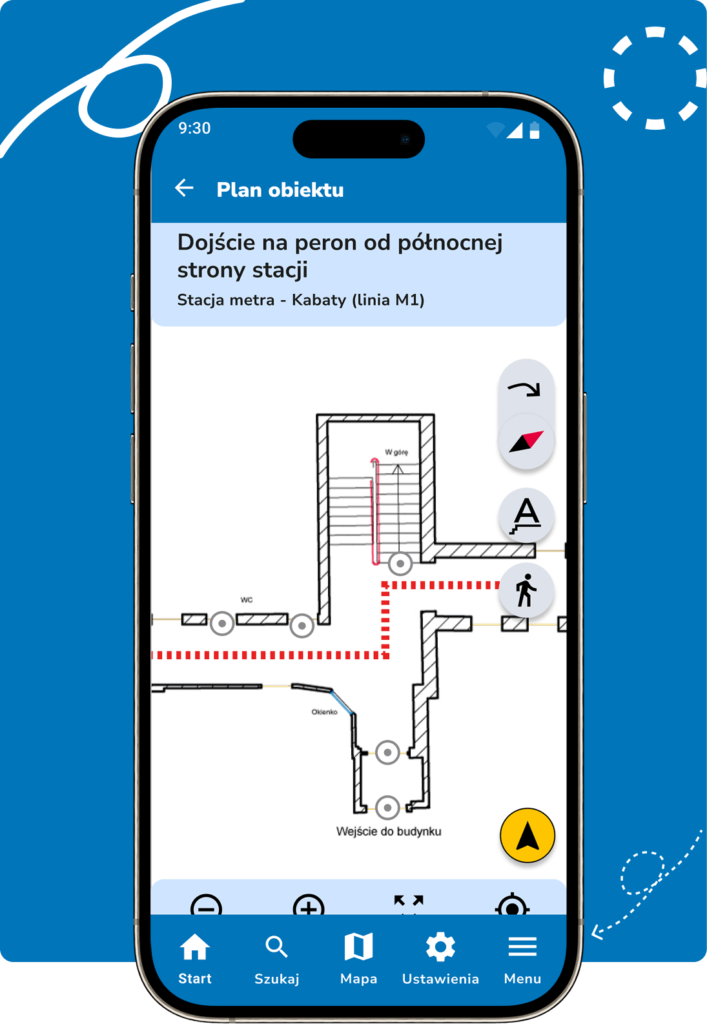
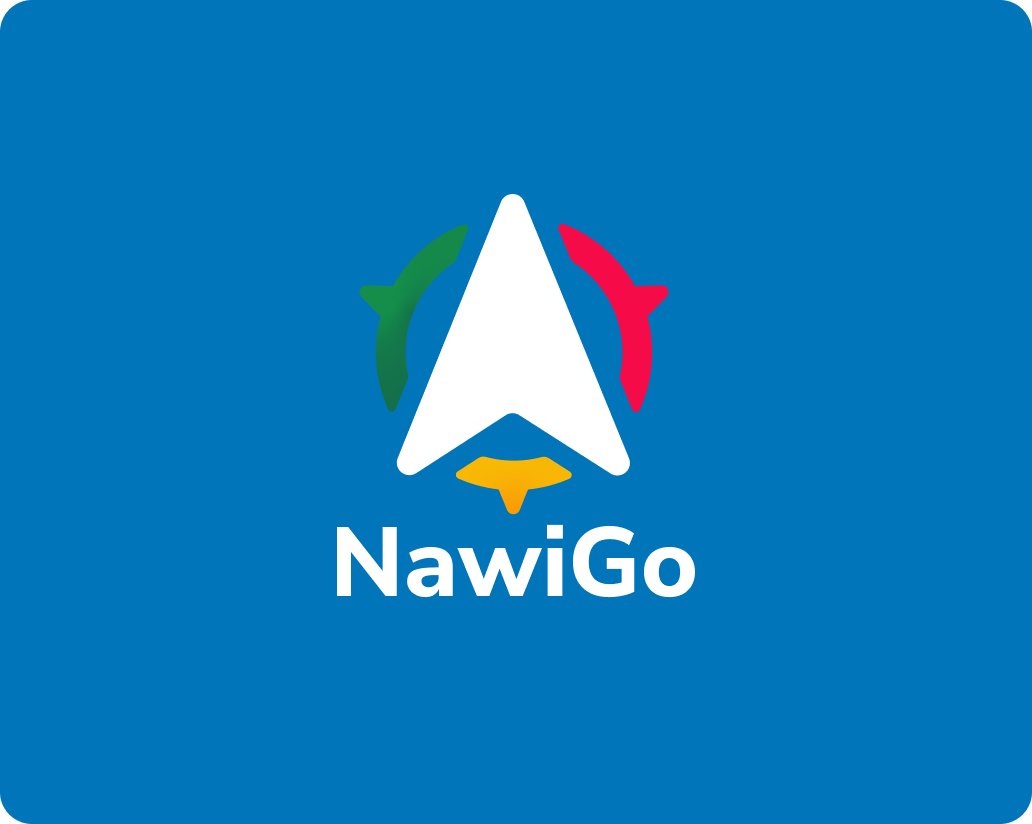
Who was the customer?
The NawiGo project was carried out as part of the “Virtual Warsaw Functional Area” (Virtual WOF) initiative, aimed at increasing the digital accessibility of public services for residents of Warsaw and surrounding municipalities.
“We had the pleasure of working with Appvinio on our large-scale project and we are very satisfied with the results. The Appvinio team demonstrated extensive experience, and their knowledge of native applications was invaluable.
They handled every challenge with confidence and were always willing to support the project, even in areas beyond their direct responsibilities. They proved to be an excellent partner, and thanks to this collaboration we successfully completed the entire project.”

Mariusz Czarnecki
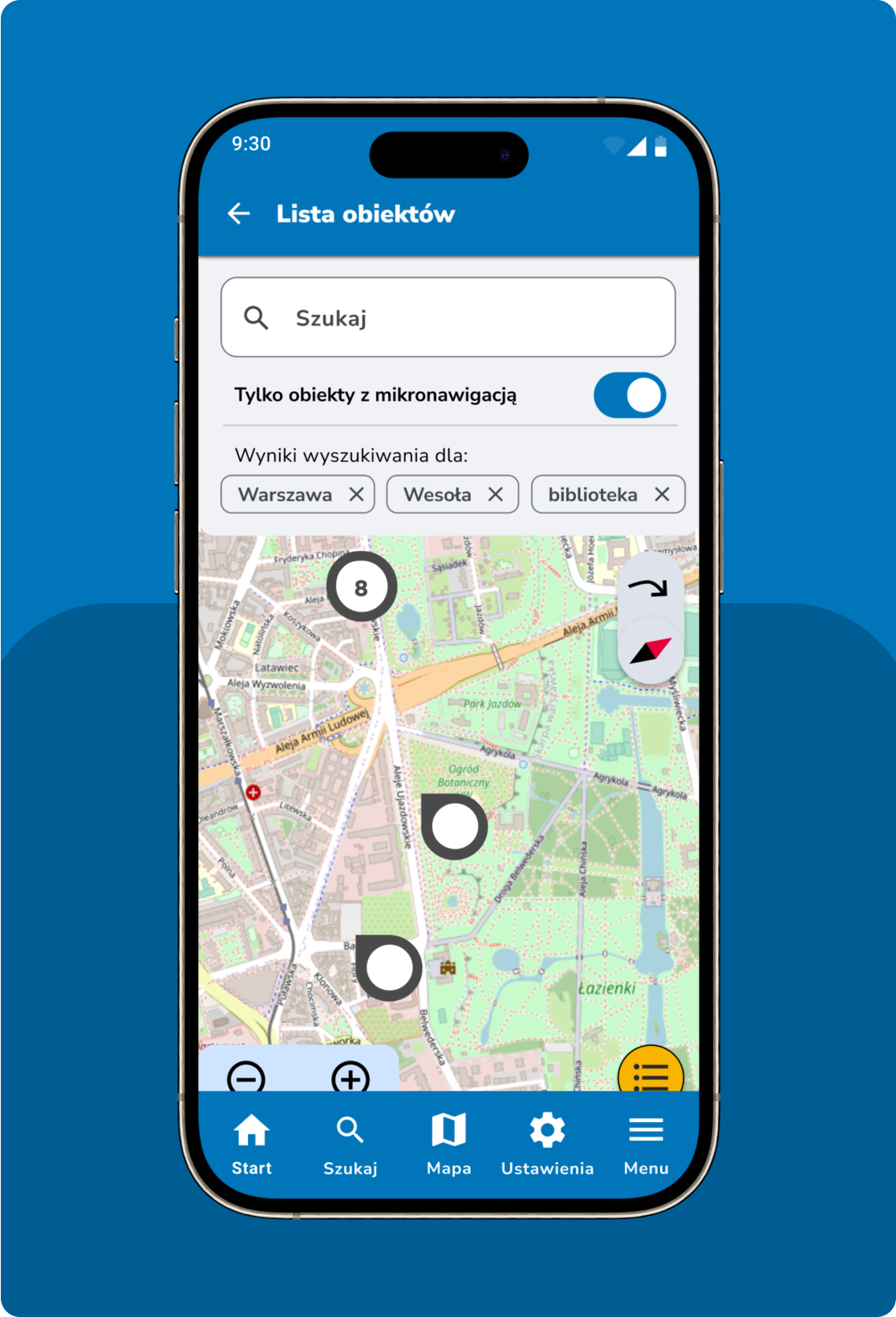
How have we done it?
We started by organizing workshops with people with visual impairments to better understand their daily challenges in navigating the city. Based on these insights, we designed an accessible interface and a microlocation system using beacons.
The result is an app that supports independent movement through government offices, metro stations, and other public spaces.
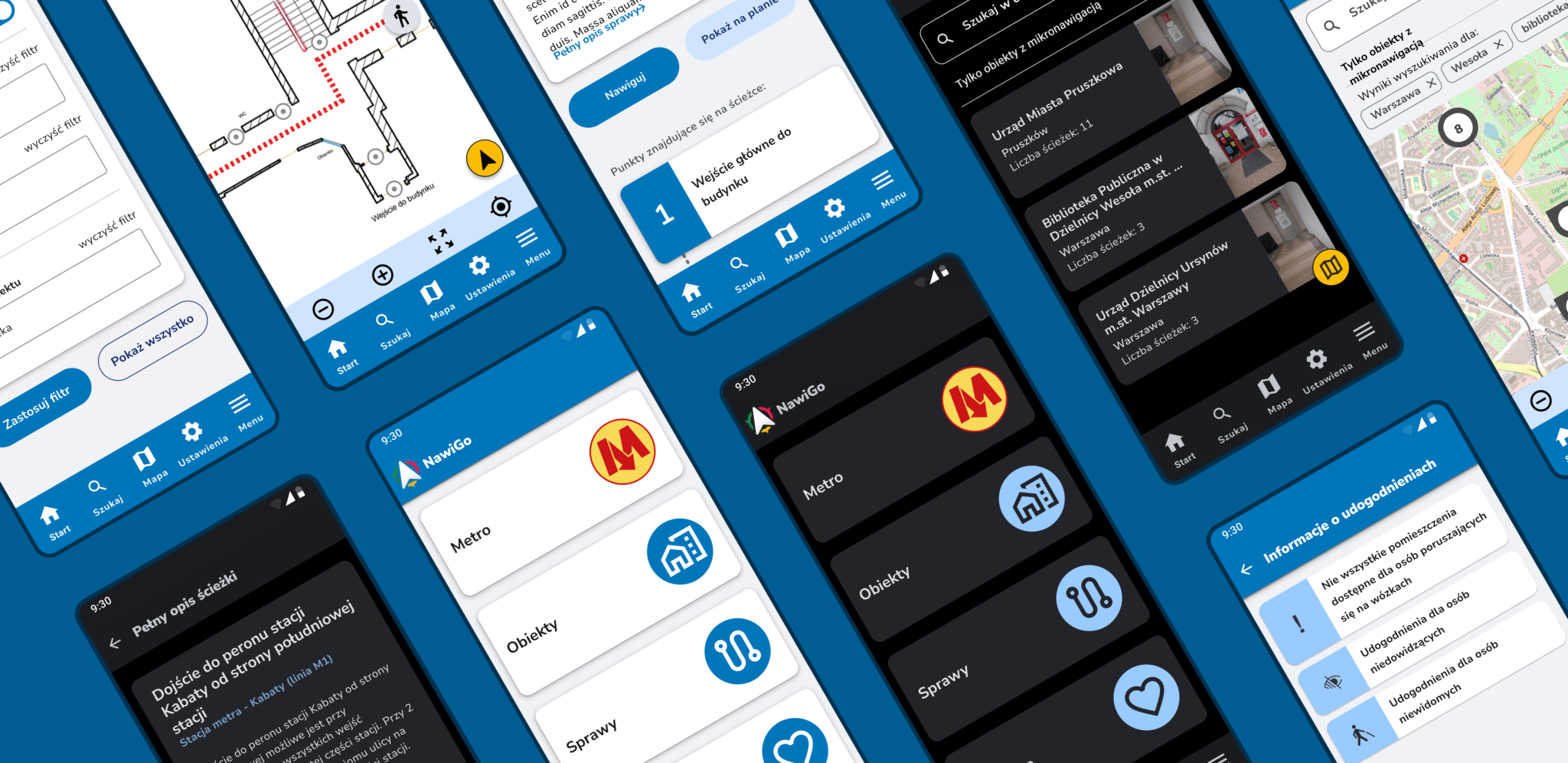
Key features
To ensure NawiGo effectively supports people with visual impairments, we designed key features that enable navigation through buildings and public spaces, address diverse user needs, and work even without an internet connection.
Micronavigation
Precise guidance to a destination is a key feature of the app. Using beacon technology, the user receives accurate information about direction and distance, enabling safe movement within buildings.
Voice and Vibration Feedback
The navigation is tailored to the needs of people with visual impairments – route information is delivered via sound cues and vibration signals, helping users accurately determine direction. A standard visual mode with building layouts is also available for sighted users.
Informations about Buildings and Metro Stations
The app provides detailed data on buildings and metro stations – including elevators, entrances, levels, available services, and offices. This allows users to plan their visit based on both spatial layout and administrative needs.
User-Specific Profiles
NawiGo is designed for various user groups – from blind and visually impaired users to fully sighted individuals. Selecting a profile at the start adjusts how the app works, including the form of feedback, interface appearance, and information display.
Offline Functionality
No signal? No problem. NawiGo offers access to navigation and essential information even without an internet connection, making it possible to move freely through metro stations, government offices, and other indoor spaces.
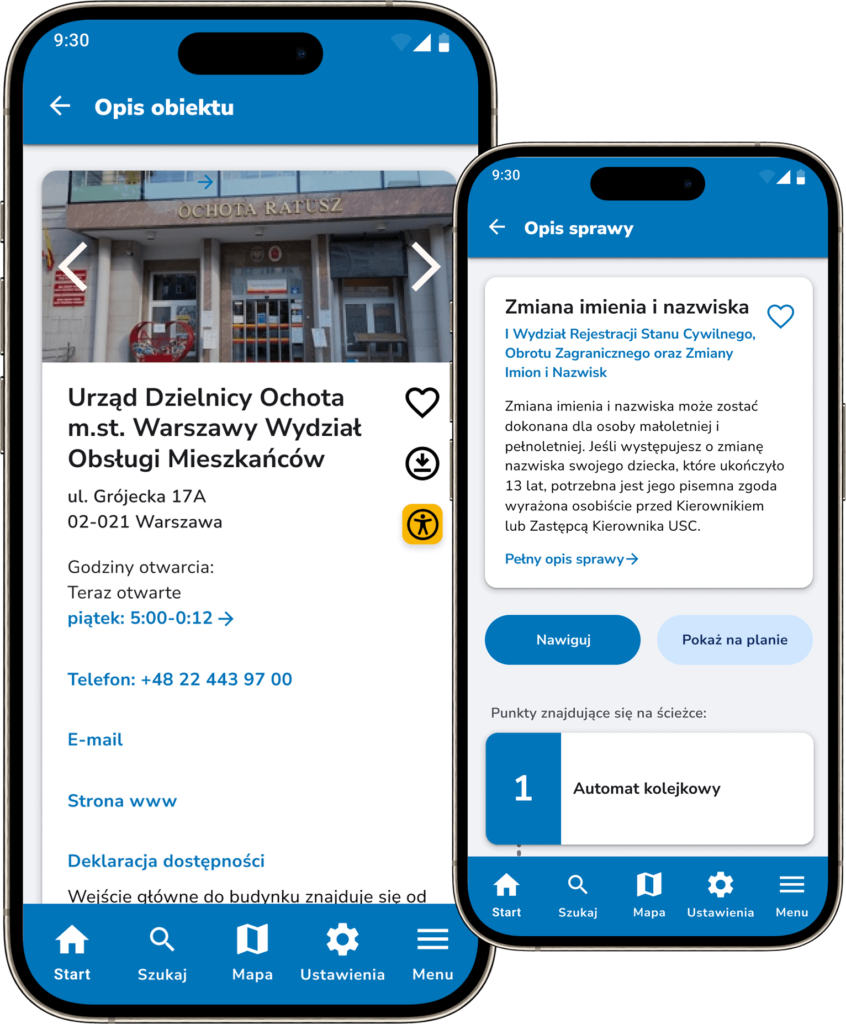
What the project schedule looked like
01
Workshops
July 2022
We started the project with workshops involving people with visual impairments. Together, we identified key needs and challenges, which became the foundation for defining the main goals and functionalities of the app.
02
Design
August – September 2022
Based on the workshop insights, we designed a WCAG-compliant interface and a beacon-based micronavigation system. We focused on intuitive operation, clear communication, and accessibility without relying on visual cues.
03
Development
October 2022 – January 2024
The project was carried out in two-week sprints by a team of 4 developers, 2 testers, a PM, a UX/UI designer, and a business analyst. Each sprint ended with a demo, while ongoing refinement sessions helped us efficiently deliver new features.
04
Field Testing
February – April 2024
We tested the app in real-world conditions—at government offices and metro stations. The testing was conducted in close cooperation with people with visual impairments, helping us refine the details and ensure the solution truly met their needs.
05
Deployment
May 2024
We began with a pilot launch in selected locations to verify how the app performs in practice. After that, we rolled it out to nearly 100 facilities equipped with the beacon-based navigation system.
06
Ongoing Development and Support
June 2024 – ongoing
We continue to maintain and enhance the app by adding new features based on user feedback. So far, we’ve introduced user profiles, operational modes, and filtering of points on maps and lists to make navigating and finding information easier.
The results of our work
NawiGo has been implemented across 16 partner municipalities and nearly 100 locations with active navigation, including government offices and metro stations. The app also provides descriptive data for nearly 1,700 locations, supporting visit planning even where beacon-based navigation is unavailable.
The project enhances independence for people with visual impairments and is recognized as a model GovTech implementation in the field of digital accessibility.
See other case studies

4GOAL
An app that promotes young soccer talents and puts them in touch with experts.
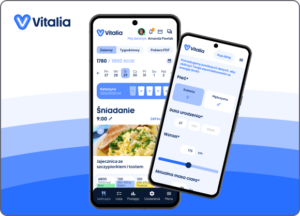
Vitalia
A mobile application that allows composing effective diets tailored to the user’s preferences.
